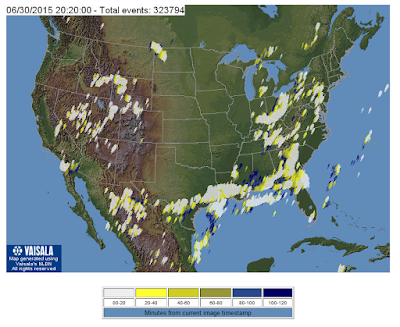
The new GLM “Flash Extent Density” product will allow the National Weather Service to see how frequently lightning is occurring over a certain area. Lightning data from the GLM can also help forecasters better pinpoint which parts of a thunderstorm are most severe based on the density (concentration) of flashes over a particular area.

The earlier we can detect lightning, the more time forecasters have to monitor a thunderstorm, and issue severe thunderstorm warnings. to detect cloud-to-ground and intra-cloud lightning flashes, the GLM offers much greater spatial coverage, and in many cases detects lightning flashes before ground-based lightning detection systems. While the National Lightning Detection Network uses more than 100 ground-based stations across the U.S. On July 16, a new tool from the lightning mapper will be rolled out to National Weather Service forecast offices across the nation, giving forecasters a valuable new tool for tracking severe thunderstorms. Until now, all those flashy lightning animations we've seen from the GOES East satellite haven't been used in operational weather forecasts.
The GLM is the first optical lightning detector on-board a satellite in geostationary orbit, and is the first of four instruments that will provide lightning mapping over most of the Western Hemisphere through 2036. The groundbreaking instrument on-board the NOAA GOES East (GOES-16) satellite has allowed us to see lightning from space like never before, mapping cloud-to-ground, cloud-to-cloud, and intra-cloud lightning from more than 22,000 miles above Earth. That’s where the Geostationary Lightning Mapper (GLM) comes in.


 0 kommentar(er)
0 kommentar(er)
